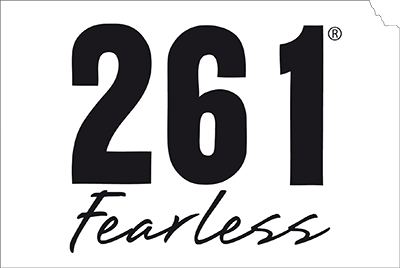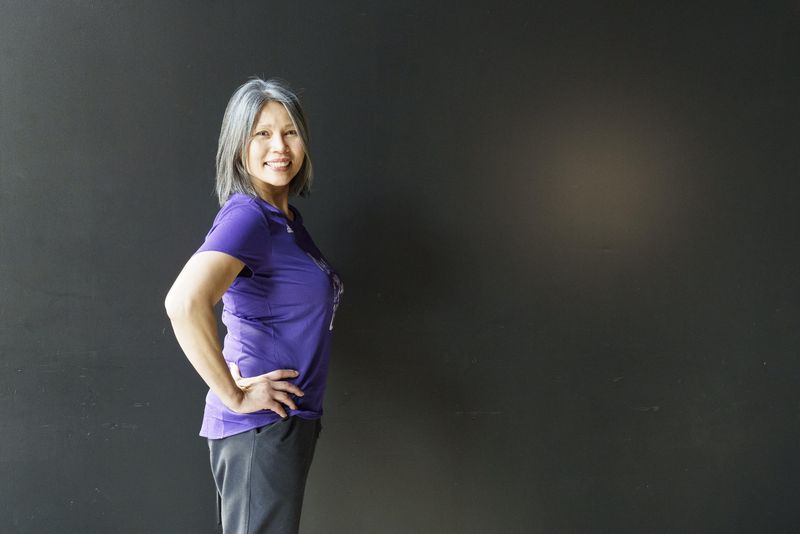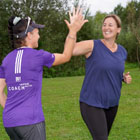261 Fearless Women’s Health Expert Dr Juliet McGrattan is here to guide you through what you need to know about running after menopause and what you can do to keep running healthily, happily and safely during the post menopause.
Most women begin their post-menopausal years in their early fifties but it’s important to acknowledge the thousands of women who have an early or premature menopause and become post-menopausal in their twenties, thirties or early forties. Exercise, including running, is a really important tool for all women to use to help them age well and set themselves up for a healthy future regardless of their age at menopause.
It’s very easy to fall into the belief that your best running days are over when you reach the menopause. That you’ve reached your peak and new challenges and personal bests are a thing of the past. Thankfully this is not true! You only have to look around you to see shining examples of older women breaking records, setting incredible goals and loving their running more than ever. Take our 261 Fearless founder, Kathrine Switzer. She ran the Boston Marathon in 2017 to mark the 50th anniversary of her legendary run of 1967 when the race official tried to push her out of the race because she was a woman. Running at age 70, she was only 20 minutes slower than her 20-year-old self and she stopped for multiple media interviews on the way. She still enjoys her running today.
What are the benefits of running after the menopause?
Running has so much to give us, it’s not just a young person’s sport. Here are some of the ways running can help to improve and maintain our health post menopause, as we get older:
Controls menopausal symptoms
Sadly, perimenopausal symptoms don’t suddenly switch off the minute you reach the menopause. Vasomotor symptoms such as hot flushes and night sweats are the most likely to continue with the average duration being 5 years after the final menstrual period. Other symptoms such as joint pain, mood changes and fatigue can still trouble women for a few years and we know that leading an active life can help. Running regularly can reduce some symptoms and help you to manage others.
Improves bone density
Running is a high impact activity which jolts bones. Bones respond positively to stress and this jolting stimulates bone forming cells called osteoblasts. It’s really important to actively try to increase our bone density and strength as we age. We naturally lose bone mass after the age of 40 and this loss speeds up around the menopause. This puts us at risk of developing osteoporosis, a condition where bones are fragile and can break easily. One in three women over 50 will experience an osteoporotic fracture in their remaining lifetime. Running, alongside strength work, is an ideal way to maintain bone density.
Reduces sarcopenia
In our postmenopausal years, in addition to losing bone mass, we lose muscle mass too, approximately one percent per year after the age of 50. This might not seem important but muscles are actually vital for good health. Not only do they help to reduce our risk of major diseases but they help to keep us stable, balanced and mobile in our later years. Regular running will help to build and preserve muscle mass.
Lowers disease risk
Age is our biggest risk factor for disease. Common medical conditions such as heart disease, cancer, type 2 diabetes and dementia all get more likely as we get older. Cardiovascular disease is the biggest cause of death in women and the risk goes up significantly after the menopause. This is thought to be due to lower levels of oestrogen influencing blood vessel walls and cholesterol levels. Physical activity is a very effective way to lower our risk of most major diseases. It helps to reduce our visceral (internal) fat levels, high levels of which we know can increase disease risk. Exercising and reducing the time we spend sitting also causes the release of myokines from muscles which have an anti-inflammatory effect on the body which again reduces our risks. Running regularly won’t remove our risk of major diseases but it can certainly influence it.
Helps joints
Aching joints are a common symptom of the menopause and this might make you hesitate as to whether high impact activity such as running is a good thing to do. You may find yourself worrying about developing osteoarthritis as you get older. Despite all the myths, it’s very clear that recreational running will not cause or worsen osteoarthritis and can in fact be used to prevent and treat it. You are much more likely to have problems with your joints, including needing joint replacements, if you are inactive. Running will stimulate the production of synovial fluid, the joint’s lubrication fluid which improves the comfort and smoothness of joint mobility. Running and strength work will also strengthen the muscles around joints which are then able to absorb some of the impact and therefore work to protect joints.
What are the problems of running after the menopause?
However good running is for our health, there are some issues that women face post menopause that make running difficult. These are mainly due to the longer term effect of lower levels of oestrogen in the body and include:
- Vulval and vaginal atrophy – thinner, less elastic tissues can cause soreness and discomfort, especially with the friction that can occur with the repetitive movements of running.
- Urinary incontinence – the supportive tissues and muscles around the bladder neck can become weaker and surveys show nearly half of women over 50 leak urine. Leakage is more likely during high impact activities such as running.
- Weight gain – the metabolic changes that occur during and post menopause mean that it can be harder to maintain a healthy weight with a natural tendency to higher body fat levels.
- Slower recovery – repair processes slow down as we age and it can take longer to bounce back from runs, particularly if they’re long or intense.
Do women need to make any changes to their running after age 50?
Now we know the benefits and some of the difficulties, it’s important to think about what steps we can take to help us run healthily and safely through our post-menopausal years. Thankfully there are lots of things we can do to keep us running well for many years ahead.
10 Tips for running safely over age 50 for women:
- Increase recovery time – allow extra rest days and prioritise sleep
- Adequately fuel your running – give your body the energy it needs to run
- Increase protein in daily diet – support muscle formation with protein-rich foods
- Do regular strength work – protect joints and prevent sarcopenia by building muscle
- Spend time on joint mobility and flexibility – joint range will reduce unless you work to maintain it
- Warm up well before running – start joint lubrication, activate muscles and prepare the body for running
- Work on balance exercises – prevent age-related loss of balance and trips and falls while running by spending time standing on one leg
- Get a sports bra fitting – breasts can become more ‘empty’ as milk ducts shrink so get a refit of your running bra
- Consider your mindset – it’s OK to develop a different relationship with running, run however it makes you happy
- Run with others – social health is important for good all round health, run with others for the community it brings.


